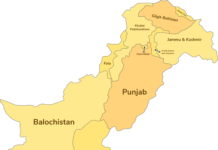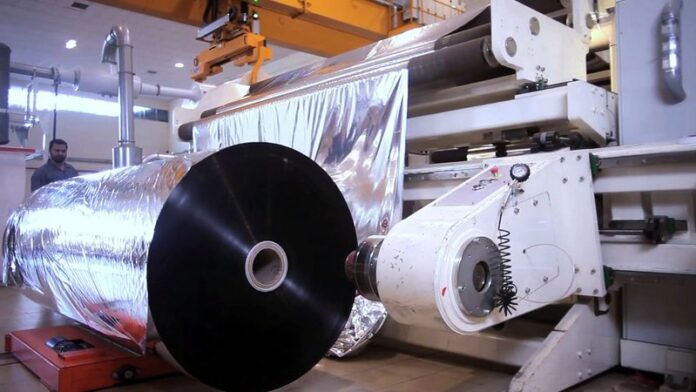If there ever was a company that took itself seriously it was Tri-Pack films. In the last eleven years, Tri-Pack films has had only two years where it ever made a loss: 2014, and 2019. As it happens, all eyes were on the year 2020 to see what would happen next.
In the financials for the year ending December 2020, released to the Pakistan Stock Exchange on 29 January, Tri-Pack films managed to make a comeback. After posting a loss of Rs310 million in 2019, the company made a profit after tax of Rs614 million in 2020.
You can thank Tri-Pack’s slow, methodical expansion over the last few decades, for its surefootedness when it comes to running its affairs.
First, some context. Tri-Pack Films is a joint venture between Mitsubishi Corporation of Japan and Packages Ltd of Pakistan. It was set up in April, 1993 as a public limited company – today, the two companies hold 19% and 33% respectively, while IGI Holdings, another Packages company owns 10%. Its head office is based in Karachi and regional offices are located in Karachi, Lahore and Hattar.
The company started off making Biaxially Orientated Polypropylene (BOPP) films. BOPP is derived from polypropylene, which is the world’s second most used commodity plastic. The ‘biaxially-oriented’ part comes from the fact that the polypropylene is stretched flat in two directions. BOPP films can be white, metal-colored, or clear. That is why it is often used to make transparent labels for clear containers. The material is also waterproof, and non-toxic, which makes it very useful as bottle labels, jar labels, and canning labels.
The company also makes CPP film, which is cast polypropylene. It is also derived from polypropylene, but has gained some popularity over the more widely used BOPP because it has a soft film, and some small barrier property differences.
Since inception, the company has always had a steady expansion plan. It commissioned its first BOPP line in 1995, of 5400 tons, and then made a second one in 2001. It built a metallizer in 2002 (used for metallized BOPP film, which is used as a replacement for foil), a third BOPP line in 2004, a second metallizer in 2006, and a third metallizer in 2009. It also commissioned a CPP line in 2008.
This decade has seen a new BOPP line in 2013, two new metallizers (2013 and 2014), and a second CPP line in 2014. Today, the four BOPP lines manufacture 68,800 tons, while the two CPP lines manufacture 17,000 tons. Today, BOPP sales contribute to 74% of total sales, while CPP makes up 26%. The share of BOPP is expected to only increase: in late 2020, the company announced a Rs9 billion project for a new BOPP line, which is likely to start production in 2023.
So, what is all of this film used for? According to Tri-Pack, the products are used for food and beverage applications, such as snacks, confectionery, dairy food, fresh cut vegetables, and beverages; and non-food applications, such as overwrapping, lamination, and bag making etc.
Over the years, the company has fared well. Its revenue in 2009 stood at Rs5,686 million, but quickly crossed the Rs10,000 million mark in just two years later. Revenue hit a new high of Rs13,597 million in 2014, falling to the Rs11,000 million range in 2015 and 2016, before crossing the Rs12 million mark in 2017, the Rs13 million mark in 2018, and finally, at Rs14,683 million in 2019.
Interestingly, the years with the highest revenue (2014, and 2019) actually correspond to the years that the company made a net loss of Rs200 million and Rs310 million respectively. Those two years saw higher financial charges, mainly because of an increase in the State Bank of Pakistan’s interest rate, and the depreciation of the Pakistani rupee. Except for 2017 and 2018, overall gross profit has increased over the years.
“In the year 2019, the profitability of the Company further deteriorated on account of volatile raw material prices, slow business conditions and exchange rate hike and supply overhang situation in the market,coupled with the initiative taken by the new government to bring the economy back on track,” the company’s latest annual report ending December 2019 said.
The year 2020 has been an achievement for many reasons. First, it is the highest revenue ever posted by the company, at Rs15,089 million. Miraculously, the company also managed to decrease its costs of sales, which meant the highest gross profit the company has also witnessed – in fact, a whole Rs1,000 million more than the previous year. This gave the company some leeway to deal with higher administrative and distributions costs (indeed, at Rs958 million, it is the costliest it has ever been since the company’s inception).
There are some clues to the company’s turn around. According to the quarterly report ending September 30, tri-Pack credited a significant improvement in demand once markets reopened after the Covid-19 lockdown. This led to a higher sales volume, particularly in the third quarter.
Given the company’s ability to recover so quickly from the impact of the lockdowns, the management’s claims that they are likely to have a good year in 2021 carry significant credibility. While the company’s stock was once a darling of investors, it has recently fallen out of favour, not having very many analysts who cover the stock.

























